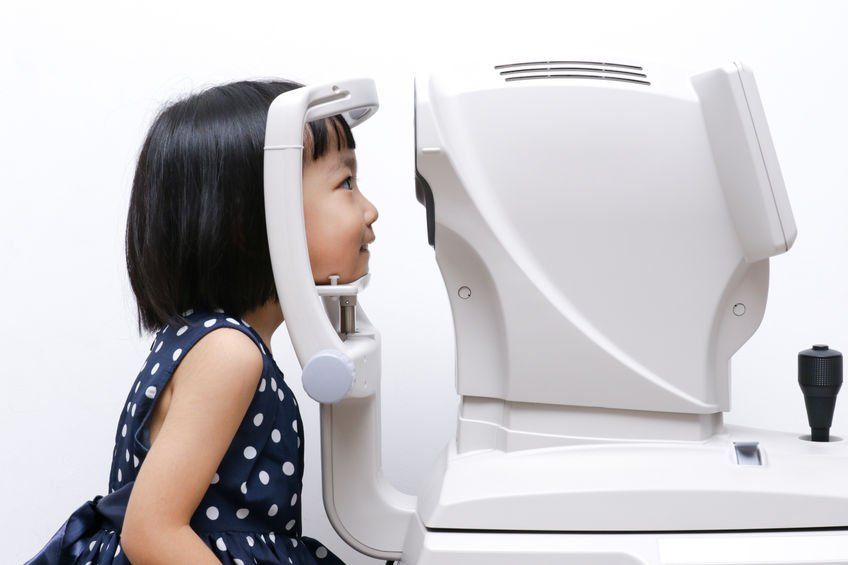Myopia - A Growing Epidemic for Children
How to reduce your child's risk of progressive nearsightedness
As an eye care professional and a parent of young children, I want to take a moment to connect with other parents about a concerning childhood eyesight trend: myopia.
Myopia is the technical term for nearsightedness. It means that near items are clearer than items further away.
Over the last two decades there has been a dramatic increase in the frequency and severity of myopia in school aged children.
In other words, more kids are being diagnosed with nearsightedness and the degree to which they are nearsighted is increasing as well.
So, here's the problem:
- Myopia can impact your child’s ability to learn and set them back from an early age.
- Kids whose nearsightedness grows worse, are at an increased risk of developing vision threatening eye diseases like retinal detachment, glaucoma, macular degeneration and blindness.
Why is this happening?
There are a couple of factors influencing the increase of myopia in kids. One is academics.
ABC News in Australia reported a study that found a higher rate of myopia among children in academically selective schools when compared to the normal school population.
Another factor is technology. Technology plays a significant role in our daily lives. Television, computers, video games, tablets and smartphones. The amount of time spent interacting with technology on a daily basis is at an all-time high.
Twenty years ago, kiddos spent a far greater portion of their day playing outdoors. Today, the bias is toward technology – both for learning and recreation.
When you think about it, computers, tablets and smartphones typically are used at close distance with smartphones being used the closest.
Even in school, an increasing percentage of instruction is delivered by technology. Some school districts are even providing every student in certain grades with a device like a Google Chromebook,increasing the odds a child will spend even more time with technology.
Both technology and rigorous academics translate to less time spent outdoors, which studies indicate is a core underlying problem.
What parents can do
The first and easiest step is to schedule an annual eye exam for your kids. The great thing about eyesight is when problems are identified early, many can be controlled or cured.
Undiagnosed and untreated eye conditions can progress to levels that threaten eyesight and may be more difficult to control.
The good news is there are ways to treat and slow the progression of myopia, especially when diagnosed early.
A study nicknamed the "Children of the 90’s " study followed almost 7,000 kids aged 8-9 years old in Great Britain. Those who spent little time outdoors were 40% more likely to develop myopia than those who spent 3 or more hours outside in the summer and more than 1 hour in the winter.
Improved light levels and the need to focus at distance are two benefits attributed to time spent outdoors.
Professor Kathryn Rose, head of orthoptics at University of Technology Sydney, worked on the Sydney Myopic Study which assessed the vision of 4,000 school children.
Professor Rosecommented “An eye that’s myopic is an eye that’s growing too fast, too quickly and what we are actually thinking may be occurring is that when children spend time outdoors they are getting enough release of retinal dopamine to actually regulate the growth of their eye.”
When time outside isn't enough
Time outside may not be enough to prevent myopia or slow its progression. Other controls that have been found effective include:
Ortho-K– short for Orthokeratology . Similar to wearing a retainer after having orthodontic braces, the patient wears special contact lenses while sleeping to help mold the shape of the eye. The effects last all day, relieving the patient of the need to wear glasses or contact lenses. For kids engaged in sports, this is a huge benefit.
Medication – Eye drops containing atropine used once a day have been found in studies to slow the progression of myopia, but this is not considered a cure.
Contact lenses – Distance Center multifocal soft contact lenses are worn just like normal contact lenses but have more than one focal zone. Several studies found these lenses effective in slowing the progression of myopia.
Specialty eyeglasses – bifocal and multifocal eyeglasses can be an option for patients with eye-muscle positioning challenges and may be more appropriate for young children not suited for contacts or eye drops.
Vision therapy – Patients are prescribed specific eye exercises that may include the use of visual aids and sometimes even computer-assisted activities. These exercises help stimulate eye muscles as well as the communication between the patients’ eyes and brain.
Take the next step
Nearly 80% of what your child learns is captured visually, and if they are struggling to see, it can affect their grades, their sports performance and even their behavior.
One thing that should be added to every kid’s back to school checklist is an eye exam.
Contact your local optometrist to schedule an eye exam before or shortly after school begins.
If you are in Edmond or the Oklahoma City area and want to schedule an eye exam for your child or children, give us a call at 405-341-2062 or try our handy online scheduling tool.
Keep an eye on your kids
Watching your kids grow and develop can be an exciting part of parenting. It is also an opportunity to watch for symptoms your child may be struggling to see clearly.
We have created a
downloadable checklist to help you ‘keep an eye’ on your kids vision. Print out a copy and keep it on the fridge or somewhere easy to find.
Most vision changes occur over a period of time, but some can happen rapidly. Refer to the checklist every two to three months and consult with your optometrist if you notice any concerning changes.






